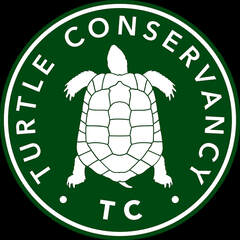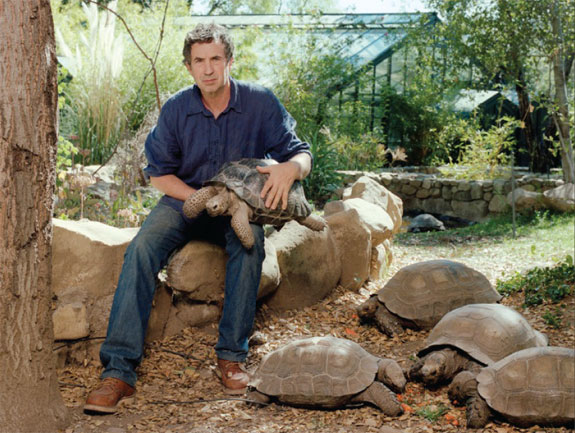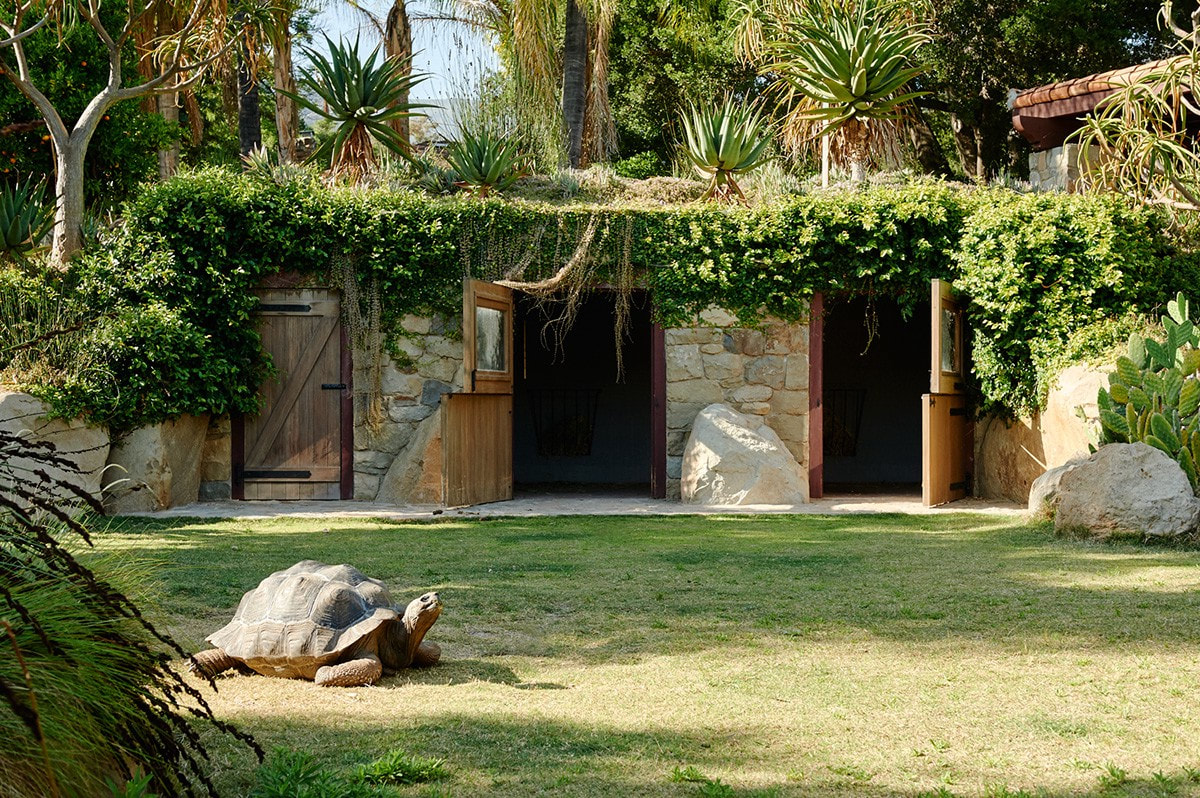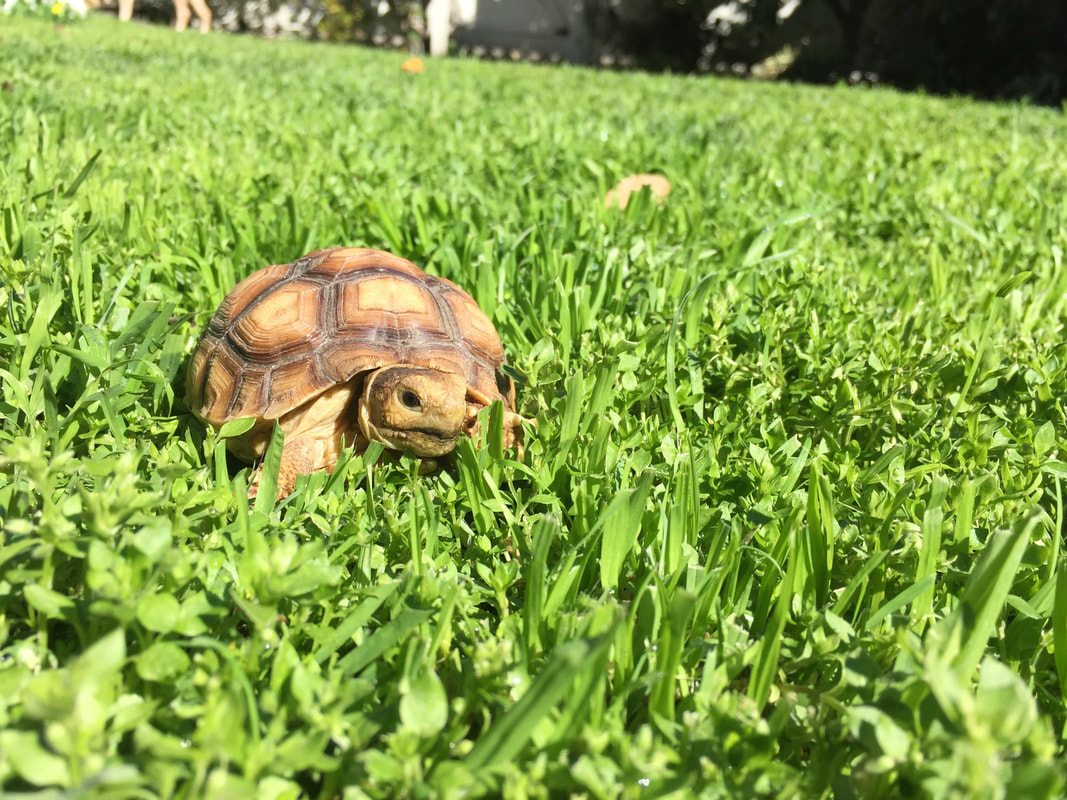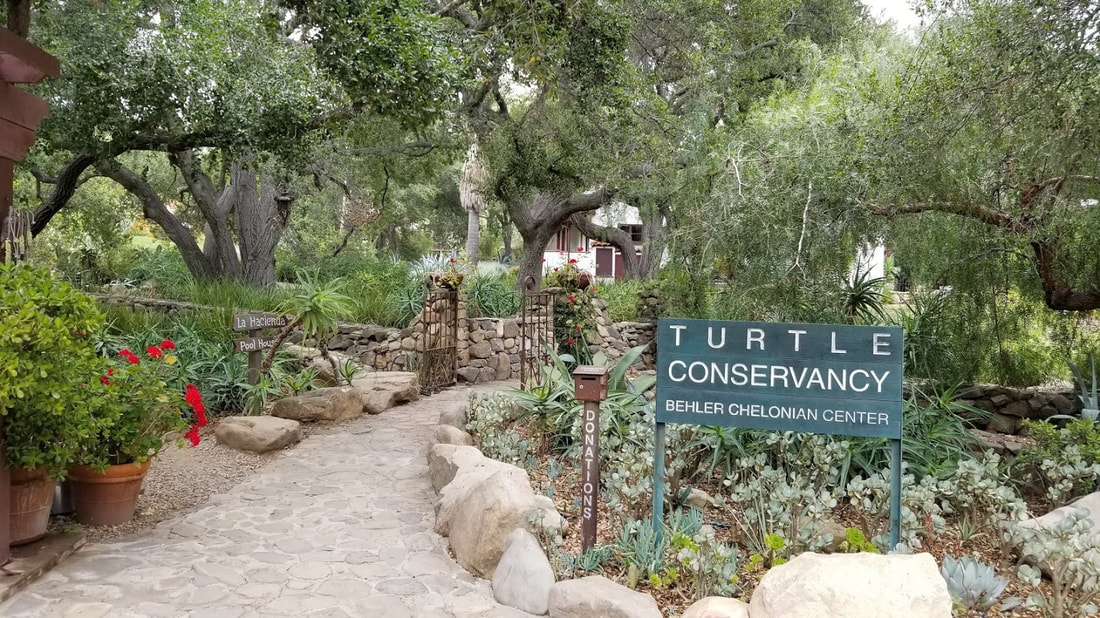|
My friend Joe Bui and his wife left Los Angeles to live a small, but super vibey town called Ojai. If you know anything about this place, it’s probably the fact that The Bionic Woman character, Jamie Summers, was a schoolteacher there. That is before her crash that got her “rebuilt” by the government. But I digress. Little did Joe and Nikki know that when they moved up there, they, like my wife and I, would adopted a tortoise as a pet. And I would bet my Bionic Man action figure, that they are now regretting that decision. Don’t get me wrong. I love Ed, our African Sulcata Tortoise. I’m sure they love theirs as well. But what will happen to either one of our prehistoric pets when we move on from this land will become a real issue when our children’s children pass away? It’s not uncommon knowledge that tortoises live a long time. Like a really, really long time. Given the right elements and care, they can live up to well let’s just say no one has lived long enough to really know. I heard there’s a tortoise who is older than the Eiffel Tower. He is somewhere back East and apparently witnessed the Civil War. So, when I bemoan about what my heirs are going to do with Ed, it’s a legit concern.
Up until recently, the Ojai operation only allowed visitors by special invitation. And that was mostly for researchers and educators. Today, you can get a very expensive ticket and feed a tortoise some carrots. Between the high price of admission and COVID restrictions, I didn’t take the 90 minute drive up Highway 101 to Ojai to visit the Turtle Conservancy Conservation Center. Thankfully I found some good stuff online. Surrounded by the Topatopa Mountains to the north and Sulphur Mountain to the south, the property is owned and operated by filmmaker, entrepreneur, conservationist, and herpetophile Eric Goode. On a 5-acre oasis, the conservancy is home to 900 turtles and tortoises from 32 species. Considered one of the premiere facility for breeding critically endangered turtles and tortoises in the world, “The Turtle Conservancy was the first organization to ever send critically-endangered captive-bred turtles back to their native range country.”
At the Turtle Conservancy Conservation Center, you will find a whole other world full of birds, lizards, various flora and fauna, as well as greenhouses scattered along the property. The “staff has taken great care to mimic different biomes by equipping multiple greenhouses with varies temperatures, humidities, biota and landscapes.” As it turns out, different turtles and tortoises each have very specific environments in which they will thrive. Vegetation, humidity and temperature all play a crucial role in their survival. “One greenhouse mimics the cloud forests at the top of the Thai mountains, another parodies the lowlands of Southeast Asia. Yet another simulates the arid climates in Namibia and South Africa.” The goal of the Turtle Conservancy is, of course, to breed these critically endangered creatures which many of its residents are on the International Union for Conservation of Nature’s Tortoise and Freshwater Turtle Specialist Group’s “Top 40 Most Endangered” list. Across the globe, turtles are depicted as easygoing, patient, and wise creatures. “Due to their long lifespan, they are an emblem of longevity and stability in many cultures around the world.” “Their magnificence, though, makes them a coveted human target. Turtle and tortoise populations face a threefold threat of extinction: the pet trade, opportunistic consumption and traditional folk medicinal practices. Some species of tortoise sell for up to 200 thousand dollars on the Black Market.”
0 Comments
Leave a Reply. |
Ian MacdonaldAn ex-copywriter turned punk rock pastor and peacemaker who dedicates his life to making the world a better place for all humanity. "that they all might be one" ~John 17:21“Prius vita quam doctrina.”
~ St. Thomas Aquinas (1225–1274) * “Life is more important than doctrine.”
Archives
June 2024
|
